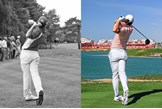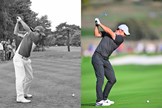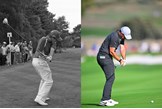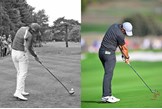How (and why) Rory McIlroy’s swing has changed
Published: Last updated:
Leading coach Stuart Dowsett looks at the evolution of Rory McIlroy’s golf swing from when he first turned pro in 2008 to now.
While Rory McIlroy possessed a unique talent and was always destined to be one of the best iron players in the game. His technique has continued to improve in the 15 years since he joined the Tour. There are lessons all of us can learn from his game management, whether you’re a club golfer or an aspiring tour pro.
Greater consistency is at the top of the wish list for all golfers, and Rory’s entire approach has been geared to achieving this. Consistency on the course is borne out of how and what you practise, and how you analyse your game. Rory has maintained consistency in his swing and, while it has changed over time and is noticeably different now compared to when he turned pro in September 2007, it has been a case of evolution rather then revolution. While his form and fortune have waxed and waned over the last 15 years, Rory has trusted his pursuit of long-term swing goals, rather than seeking quick fixes.
The big improvements are visible in his vastly improved position at the top of the backswing. This has naturally led to a more neutral downswing, with better sequencing that creates a more consistent impact. His increased strength and fitness have helped him maintain control and consistency in his powerful action, but not, crucially, at the expense of his superb fluency and tempo.
Let’s look more closely at Rory then – in 2008 – and now. From address to impact, we’ll study the evolution of one of the greatest swings the game has ever seen.

Address: taller at address
Taller at address
Not every change that Rory’s made has been textbook and the set-up is the one that stands out. One of the best phrases I know is that ‘tension is the biggest killer of a golf swing’ and Rory is now creating more tension in his back than he was earlier in his career. Now, you can see more of a curve in his lower spine (the golfing term is an ‘S spine’) than he used to, which would cause a problem in how most golfers turn or coil their body. He’s standing taller at address, too. This, coupled with his more muscular physique, will help him shorten his swing, which could be a conscious decision to add control and consistency.

At the top: arms swing shorter
Rory has changed the top of his swing to naturally get the club working on a different path in the downswing. When he first came on tour, his arms were in a long, deep position, with his elbow pointing down. You need a lot of athleticism to deliver the club square from here as the arms will tend to drop in behind his fast-turning body. The arms now swing shorter, which matches his aggressive body action much better, and his right elbow is not so down. From here, his arms can just fall down without any manipulation. The perfect example of minimal change for maximum effect.

Halfway down: more efficient hands
Rory’s earlier position, halfway down with the shaft pointing well right of the target, brought a lot of variables into his game because it required manipulation to deliver the club square and on a neutral path.
But the less manipulation you require, the more consistent you will be. Now, Rory’s clubhead is significantly closer to his hands and consequently the shaft is more on line. The hands are more in the middle of his chest rather than outside the line of his body, meaning that his hands have moved in a more direct route towards the ball.
His downswing is more efficient because his position at the top is better.

Impact: arms have more space
Rory’s always had a fast-turning body action and his hips and shoulders used to point well left of the target at impact – his right shoulder had that ‘out’ look as a result of those hands being too far behind the body in the downswing.
His hips now look less turned at impact due to the hands and club falling more in front of him in the downswing, and he isn’t having to use so much rotation to square the club. His arms have more space to work through impact because they’ve come down on a more direct route and aren’t being blocked by the body, so he can hit with the freedom that we all admire.
Leading coach Stuart Dowsett has identified how you can implement lessons from Rory’s swing evolution into your own game. Check out those lessons on the Today’s Golfer Members’ website.
-
 We look at the changes to Rory McIlroy's golf swing from 2008 to 2023
We look at the changes to Rory McIlroy's golf swing from 2008 to 2023
-
 Rory McIlroy has shortened his swing since he first came onto the tour
Rory McIlroy has shortened his swing since he first came onto the tour
-
 Rory McIlroy's golf swing has changed from 2008 to 2023
Rory McIlroy's golf swing has changed from 2008 to 2023
-
 How Rory McIlroy's impact position has changed
How Rory McIlroy's impact position has changed
-
 Rory McIlroy's address position has changed over the years
Rory McIlroy's address position has changed over the years
